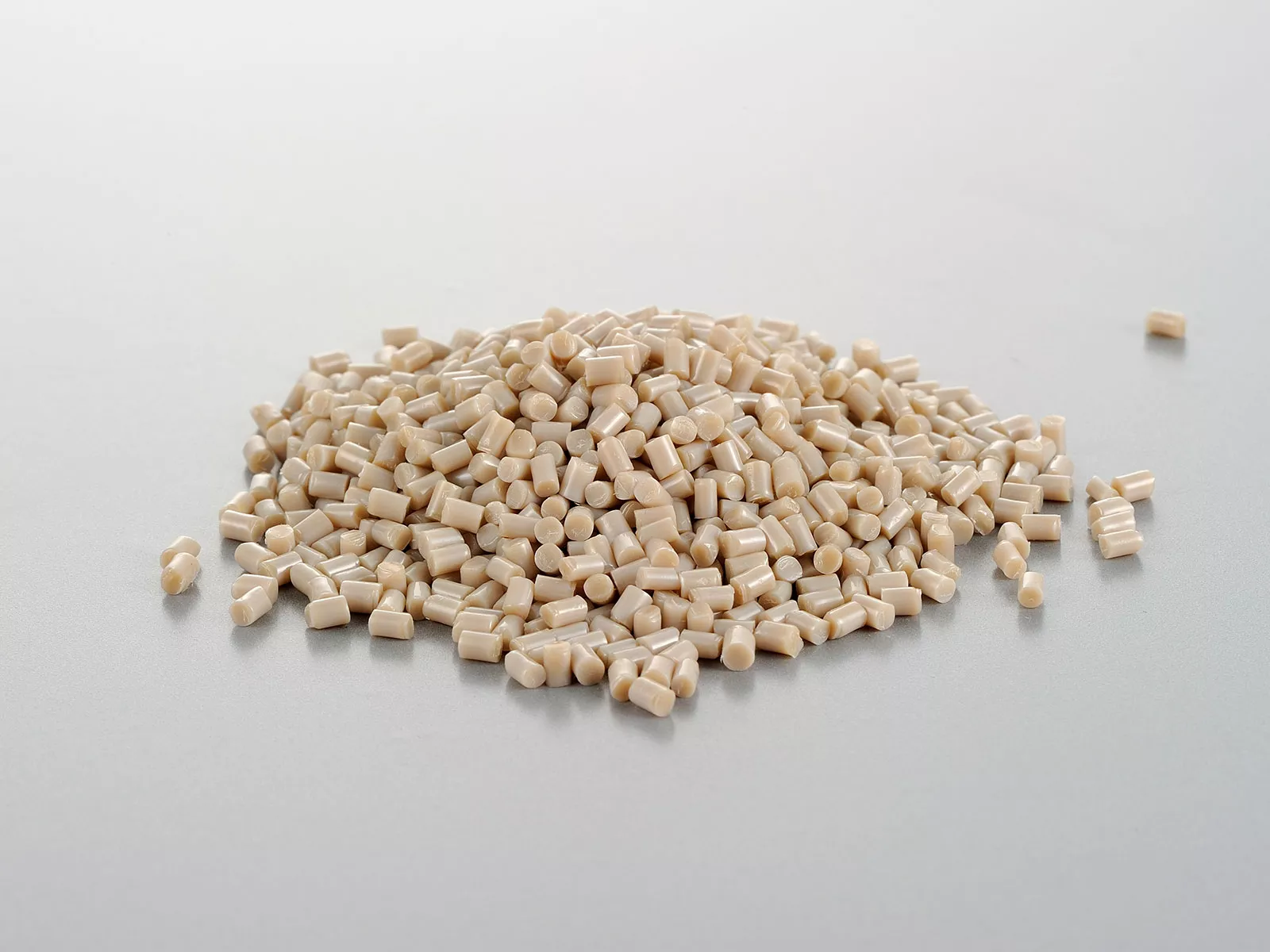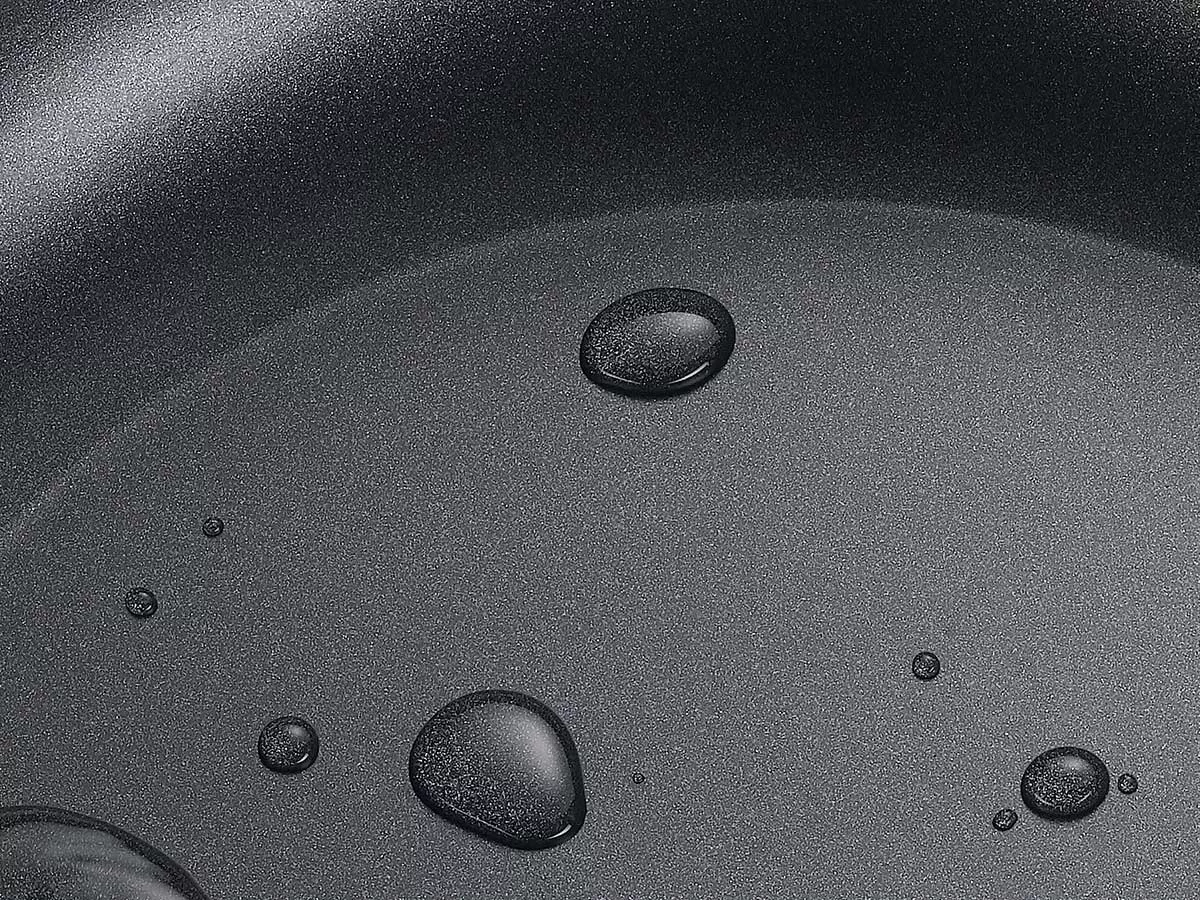1. Ceramic Cookware
Ceramic cookware has become a popular choice for many home cooks and chefs alike. It’s known for its sleek appearance and the ability to cook food evenly. But like anything, it has its ups and downs.
Pros of Ceramic Cookware
- Non-Toxic Cooking: Ceramic cookware is often praised for being free from harmful chemicals. It doesn’t contain PFOA, PTFE, or heavy metals, making it a safer choice for health-conscious individuals.
- Easy to Clean: Thanks to its non-stick surface, cleaning ceramic pots and pans is usually a breeze. A gentle wipe with a sponge often does the trick.
- Aesthetic Appeal: With a variety of colors and designs, ceramic cookware can add a touch of style to any kitchen.
Cons of Ceramic Cookware
- Durability Concerns: While ceramic looks great, it can be prone to chipping and cracking over time, especially if not handled with care.
- Heat Sensitivity: Ceramic cookware can be sensitive to high heat. Excessive temperatures might cause the coating to degrade quicker.
- Price: High-quality ceramic cookware can be on the pricier side, which might not fit every budget.
Ceramic cookware is a great option if you're looking for something that's both stylish and functional. However, it's important to handle it with care to ensure it lasts.
For those who are considering the differences between ceramic and enamel cookware, it’s worth noting that while both offer aesthetic appeal, ceramic may require more careful handling to maintain its non-stick properties over time.
2. Granite Cookware
Granite cookware is becoming a popular choice in kitchens, and for good reason. It's not just about looking good. This type of cookware combines function and style, offering a range of benefits that make it stand out from the crowd.
Benefits of Granite Cookware
- Non-Toxic and Safe: Granite cookware is generally free from harmful chemicals, making it a safer choice for cooking. Unlike some other non-stick options, it doesn't release toxic fumes when heated.
- Stylish Appearance: With its sleek and modern look, granite cookware can add a touch of elegance to any kitchen. Granite-coated cookware is often praised for its aesthetic appeal.
- Durable Surface: The surface of granite cookware is known for its durability. It’s resistant to scratches and chips, which means it can handle the wear and tear of everyday cooking.
Considerations
- Potential Chipping: Despite its durability, granite cookware can chip if not handled with care. It's important to avoid using metal utensils which can damage the surface.
- Price Point: Typically, granite cookware is more expensive than other options. However, investing in a quality set, like a 10-piece cookware set, can be worthwhile for those who prioritize longevity and performance.
- Care and Maintenance: Proper care is essential for keeping granite cookware in top condition. Hand washing is often recommended to preserve the non-stick coating and prevent chipping.
Granite cookware offers a stylish and durable option for home cooks, but it does come with its own set of challenges. Weighing the pros and cons can help you decide if it's the right fit for your kitchen needs.
3. Non-Stick Coating
When it comes to cooking, having a non-stick surface can make all the difference. Both ceramic and granite cookware offer non-stick features, but they do so in slightly different ways. Let's break down what each brings to the table.
Ceramic Cookware
Ceramic cookware is often praised for its natural non-stick properties. The non-stick surface is achieved through a coating made from silica, which is derived from sand. This makes it a popular choice for those who are health-conscious, as it is free from PTFE and PFOA, chemicals often found in traditional non-stick coatings.
- Pros:
- Cons:
Granite Cookware
Granite cookware, on the other hand, typically features a non-stick coating that is applied over a metal base. While this provides a good non-stick surface, it's important to note that the coating can wear off if subjected to high heat or rough cleaning methods. This is something to keep in mind when considering granite cookware's durability.
- Pros:
- Cons:
Choosing between ceramic and granite cookware often boils down to what you value more: a natural, chemical-free surface or a potentially longer-lasting non-stick option. Always consider your cooking habits and preferences.
In the end, both ceramic and granite have their strengths and weaknesses. If you prioritize a chemical-free cooking experience, ceramic is a solid choice. However, if you're looking for something that can withstand higher temperatures and perhaps last a bit longer, granite might be the way to go. Remember, the choice between non-stick and marble coatings also plays a significant role in your decision-making process, depending on your specific cooking needs.
4. Heat Distribution
When it comes to cookware, heat distribution is a big deal. It can make or break your cooking experience. Let's dive into how ceramic and granite cookware stack up in this department.
Ceramic Cookware
Ceramic cookware is known for its even heat distribution. This means your food cooks consistently, reducing the chances of hot spots, which can lead to burning. Ceramic is great for dishes that require gentle and uniform heat.
- Pros:
- Cons:
Granite Cookware
Granite cookware, on the other hand, heats up quickly and is perfect for high-temperature cooking. However, it may not distribute heat as evenly as ceramic. This can be a bit tricky when cooking delicate dishes.
- Pros:
- Cons:
Choosing between ceramic and granite often comes down to the type of cooking you do most. If you love slow-cooked meals, ceramic might be your best bet. For those who need something that heats up fast, granite could be the way to go.
For those looking to achieve professional cooking results, finding the top nonstick pans can make all the difference in heat distribution and cooking efficiency.
5. Durability
When it comes to durability, ceramic and granite cookware each have their own strengths and weaknesses. Understanding these can help you decide which type might be more suitable for your kitchen.
Ceramic Cookware Durability
Ceramic cookware is known for its longevity, provided it's well-maintained. It's resistant to scratches and can withstand everyday cooking challenges. However, it can chip or crack if dropped or subjected to sudden temperature changes.
- Scratch Resistance: Ceramic surfaces are generally tough against scratches, making them ideal for daily use.
- Temperature Sensitivity: Be cautious with rapid temperature changes, as this can cause cracking.
- Chipping Risks: Dropping ceramic cookware can lead to chips or cracks, affecting its longevity.
Granite Cookware Durability
Granite cookware offers a different set of durability features. It's typically lighter than ceramic, which might be a plus for some. However, it’s not as durable when exposed to high heat.
- Heat Limitations: Granite cookware can't handle very high temperatures, as it may damage the non-stick coating.
- Weight Factor: Being lighter, it's less prone to damage from falls compared to ceramic.
- Coating Wear: Over time, the non-stick surface might wear out, especially if used frequently at high temperatures.
Granite cookware is less durable than ceramic and is not suitable for very high heat, as excessive temperatures can damage its non-stick coating.
In summary, if you’re looking for something that can handle the hustle and bustle of a busy kitchen, ceramic might be your go-to. But if lighter cookware is more your speed, granite could be worth considering, just be mindful of its heat limitations.
6. Weight
When it comes to cookware, weight plays a big role in how easy it is to handle and use. Let's break down how ceramic and granite cookware stack up in this department.
Ceramic Cookware Weight
- Ceramic pots and pans are generally lighter than their granite counterparts. This makes them easier to lift, especially when full of food.
- The lightweight nature is perfect for those who might struggle with heavier cookware, like seniors or anyone with limited strength.
- However, the lightness can sometimes mean less stability on the stove, so be cautious when stirring or moving them around.
Granite Cookware Weight
- Granite cookware tends to be heavier, giving a solid feel that some cooks prefer.
- This heaviness can help with stability on the stove, reducing the chance of tipping or spilling.
- But, the weight can be a downside for those who need to move the cookware frequently or have difficulty lifting heavy items.
For many, the choice between ceramic and granite cookware boils down to personal preference. If you like a lighter pot that’s easy to maneuver, ceramic might be your go-to. On the other hand, if you appreciate a more substantial feel and don't mind a bit of heft, granite could be the better choice.
In the end, it's all about finding what fits your cooking style and physical needs best. If you're interested in learning more about the benefits of different cookware types, including ceramic and its health advantages, check out ceramic pots.
7. Price
When it comes to choosing between ceramic and granite cookware, price is a big factor for many of us. Both types have their own price points, influenced by materials, brand, and quality.
Ceramic Cookware
Ceramic cookware tends to be on the pricier side compared to traditional non-stick options. This is mainly due to their eco-friendly materials and excellent non-stick properties. You might find a basic ceramic-coated pan for around $20, but full sets can range from $100 to $200 or more, depending on the brand and the number of pieces included.
Granite Cookware
Granite cookware, on the other hand, is often more affordable. Prices for granite-coated pans usually start at about $15, with complete sets ranging from $50 to $150. Granite is generally considered a budget-friendly option, offering good performance without breaking the bank.
Comparing the Costs
Here's a quick comparison of the typical price ranges for each:
| Cookware Type | Price Range (Single Piece) | Price Range (Full Set) |
|---|---|---|
| Ceramic | $20 - $50 | $100 - $200+ |
| Granite | $15 - $35 | $50 - $150 |
Quick Tip: If you're looking for a balance between cost and performance, consider starting with a single piece from each type before investing in a full set. This way, you can test out which one suits your cooking style best without a big upfront cost.
8. Maintenance
Keeping your cookware in good shape is key to making it last, and both ceramic and granite have their own quirks when it comes to maintenance. Let's break it down.
Ceramic Cookware
- Gentle Cleaning: Ceramic pots and pans need a soft touch. Avoid abrasive cleaners or scouring pads, which can scratch the surface.
- Hand Wash Recommended: While some ceramic cookware claims to be dishwasher safe, hand washing is best to extend its life.
- Avoid High Heat: Sudden temperature changes can cause ceramic to crack. Let them cool down naturally before cleaning.
Granite Cookware
- Nonstick Surface Care: Granite cookware often features a nonstick coating. Use wooden or silicone utensils to avoid scratching.
- Dishwasher Safe: Most granite cookware can handle the dishwasher, but hand washing is still a gentler option.
- Regular Inspection: Check for chips or cracks regularly, as these can lead to bigger issues over time.
Note: Regular maintenance not only keeps your cookware looking good but also ensures it performs well for years.
In the world of nonstick skillets, ceramic options offer a unique surface, but they do require careful handling to avoid brittleness. Similarly, if you're looking to avoid PFAS chemicals in your cookware, both ceramic and granite provide effective alternatives, though with different care needs.
9. Aesthetic Appeal
When it comes to the look of your kitchenware, both ceramic and granite cookware bring their own flair. Let's break down what each has to offer.
Ceramic Cookware
Ceramic pots and pans are like the fashionistas of the cookware world. They come in a rainbow of colors and designs, making it easy to match them with your kitchen's vibe. Whether you want something bold and bright or subtle and classic, ceramic has got you covered.
- Color Variety: With ceramic, you can find cookware in almost any shade, allowing you to personalize your kitchen.
- Design Options: From sleek modern lines to more traditional looks, ceramic cookware can fit any style.
- Visual Appeal: The glossy finish on ceramic pieces often makes them look more expensive than they really are.
Ceramic cookware not only enhances your cooking experience but also adds a splash of color and elegance to your kitchen.
Granite Cookware
Now, if you're going for a more earthy, rustic feel, granite cookware might be your best bet. It's all about that natural stone look, which can add a touch of sophistication to any kitchen.
- Natural Look: Granite cookware is known for its stone-like appearance, which brings a bit of nature indoors.
- Texture: The surface of granite cookware often has a unique, speckled texture that's both eye-catching and practical.
- Durability Aesthetic: Granite's robust look matches its tough build, making it great for kitchens that see a lot of action.
Choosing between marble-coated cookware and granite-coated cookware often boils down to personal taste. Marble offers a lighter, more elegant appearance, while granite provides a sturdy, rustic charm. Either way, both types can elevate the aesthetic of your kitchen space.
10. Versatility
When it comes to versatility, both ceramic and granite cookware have their unique strengths and weaknesses. Let's break it down:
Ceramic Cookware
Ceramic pots and pans are perfect for those who love slow cooking. They hold heat really well, making them great for dishes that need gentle, even cooking. However, they're not the best choice if you're looking for something to handle high-heat tasks like searing or browning. Also, ceramic is quite delicate. It can scratch or chip easily, so you have to be careful with it.
- Eco-friendly and non-toxic: Ceramic cookware is a great choice for those who are conscious about the environment and health.
- Ideal for slow cooking: Because of its excellent heat retention, ceramic is perfect for soups, stews, and other dishes that need time to develop flavors.
- Shorter lifespan: Typically, you'll need to replace ceramic cookware every 3-5 years due to wear and tear.
Granite Cookware
Granite cookware, on the other hand, is quite robust. It's generally more durable than ceramic, which makes it a better option for everyday use. Plus, granite pans can handle higher temperatures, so they're good for searing meats or frying.
- Durable and sturdy: Granite cookware can withstand more abuse in the kitchen, making it a long-lasting choice.
- Handles high heat: Perfect for tasks that require high temperatures, like frying or searing.
- Heavier weight: Granite cookware is often heavier, which might be a consideration for those who prefer lighter kitchen tools.
Choosing between ceramic and granite cookware often comes down to what kind of cooking you do most. Do you need something for slow, gentle cooking, or are you looking for a pan that can handle high heat and daily use?
In conclusion, both types of cookware have their place in the kitchen. Whether you prioritize eco-friendly cooking with ceramic or need the durability of granite for high-heat cooking, understanding their versatility helps you make the right choice for your culinary needs.
Wrapping It Up
So, there you have it—ceramic and granite cookware both have their ups and downs. Ceramic is great if you're looking for something that's easy to clean and doesn't stick, but you gotta be careful with it because it can chip. Granite, on the other hand, is super durable and can handle high heat, but it might be a bit heavier and sometimes needs a little extra care. At the end of the day, it really depends on what you need in your kitchen. Whether you go for ceramic or granite, just make sure it fits your cooking style and budget. Happy cooking!









